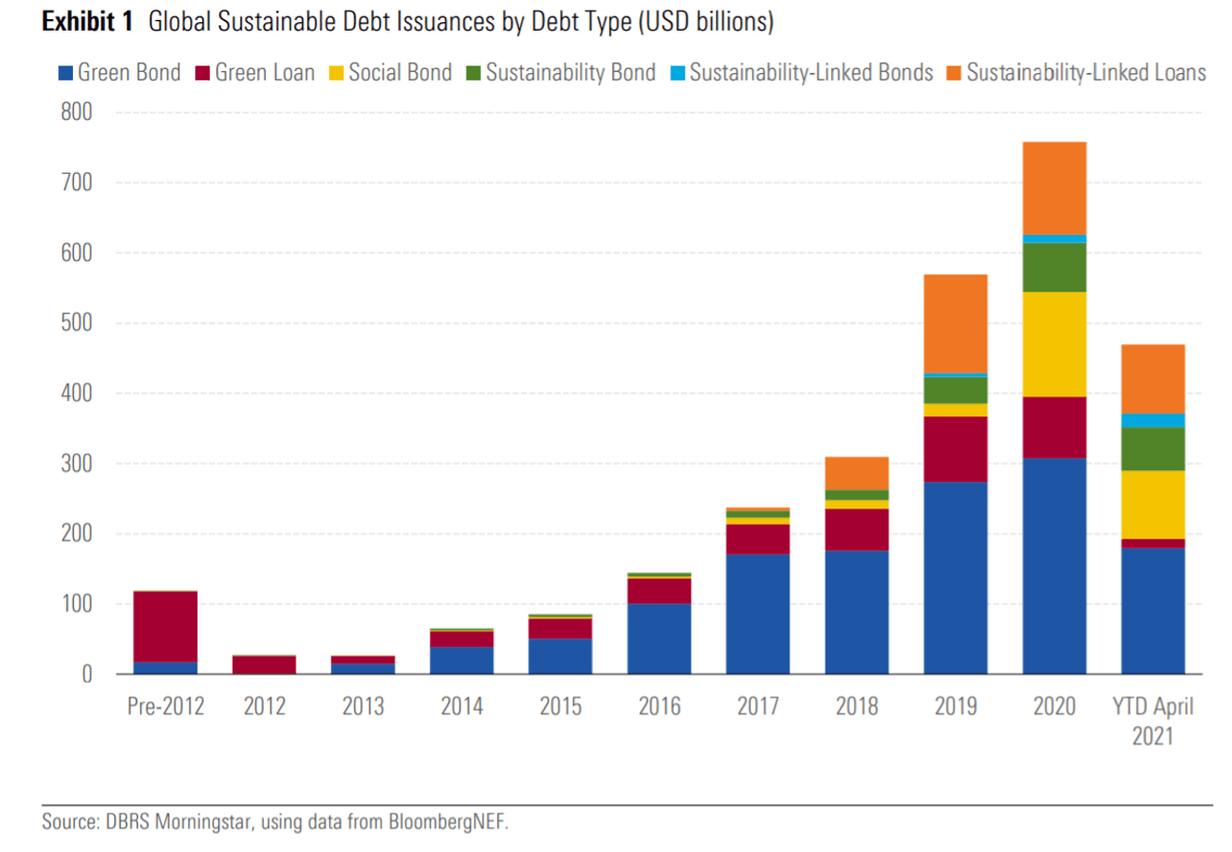Today, sustainability is a growing feature in many transactions on the private market. Europe is leading the trend, using EU regulation to encourage asset managers to apply ESG principles to their investments. According to Preqin research, 63% of the $2.5 trillion of alternative assets managed in the EU is managed according to sustainable principles.
Sustainable finance instruments
There are two main sustainable finance instruments – Green Loans, which set specific conditions on how loaned capital is deployed, and Sustainability-Linked Loans (SLLs), which can be used to finance projects linked to ESG objectives agreed at the outset, with conditions linked to how the fund meets Sustainability Performance Targets (SPTs). The arrangement often involves a bonus-malus system which indexes loan rates in order to provide an incentive for the fund to meet its commitments. For lenders, SPT calculation methods and objective monitoring is therefore essential to the overall functioning of the system.
There is no specific regulation governing SLLs, however the Loan Market Association (LMA), the Asia Pacific LMA (APLMA) and the Loan Syndication and Trading Association (LSTA) came together in 2019 to draw up a set of now widely used Sustainability-Linked Loan Principles covering the Borrower’s Corporate Social Responsibility (CSR) strategy; definition, monitoring and reporting on SPTs; and Review periods.

CACEIS DBRS Morningstar, using data from BloombergNEF
The Sustainable Debt market has grown rapidly since 2018, with both Green Loan and SSL issuance volumes doubling and quadrupling respectively. Today, sustainable debt has become an essential product for lending banks, and a key financing source for private asset funds.
Using KPIs to monitor Borrowers’ SPTs.
To be eligible for ESG financing, borrowers must also be able to demonstrate a track record of ESG credentials which again serves to steer the market in sustainable direction. A well-defined set of KPIs provide a clear picture on aspects such as an investment’s role in the transition to green energy, the circular economy and the conservation of biodiversity. KPIs in combination with SPTs give borrowers clear quantitative objectives instead of just defining loan deployment conditions. Companies are therefore incentivised to rethink their operating methods to adapt to KPIs that align with the UN’s sustainable development goals.
GPs are under increasing pressure to deliver ever better ESG data to their investors.
Today, engaging a third-party to perform independent controls on firms’ SPTs is mandatory, although under certain conditions it can still be performed in-house. Such controls require independent and reliable data, and new data providers are entering the market to offer ESG scoring services for private assets. All this serves to raise the bar on ESG reporting, and GPs are under increasing pressure to deliver ever better ESG data to their investors and other stakeholders.
The main objectives for ESG financing
ESG financing plays a key role in aligning asset management with the UN’s sustainable development goals by promoting sustainable projects and practices. Clearly defined SPTs in combination with KPIs also bring far greater transparency to the industry, promoting real change and exposing insincere greenwashing ploys. Finally, loan rate indexing to SPTs provides a real financial incentive for borrowers to meet their targets, as the better the KPIs on SPTs, the lower the loan rate and the better the manager’s performance. Looking to the future, the Fund Financing Association (FFA) notes that “investor demand continues to be focused on ESG” and that “ESG-linked Fund Financing continues to be on the rise in Asia”. Europe’s regulatory framework has been central to reshaping the industry in terms of sustainable practices so monitoring regulatory developments is key to understanding future business opportunities and leveraging European groups’ experience.
We anticipate a major part of our bridge financing deals being ESG-linked over the coming 2–3 years.
Engaging an experienced service provider.
CACEIS’ Private Capital Servicing division (“PERES” Business Line) pools its expertise with that of Credit Agricole’s Investment banking arm (CACIB), its network of Regional Banks, LCL, and its Wealth Management arm (Indosuez) to offer an innovative banking solution. As a leading player in this segment, we provide Equity Bridge Financing (EBF) to a select number of our clients. We anticipate a major part of our bridge financing deals being ESG-linked over the coming 2–3 years. The Crédit Agricole group is a leading player for sustainability-linked transactions such as green loans and SLLs, and its corporate strategy and ethical business policy are aligned to ensure it maintains its market positioning, industry reputation and role as a motor for green investing both in Europe and further afield.

